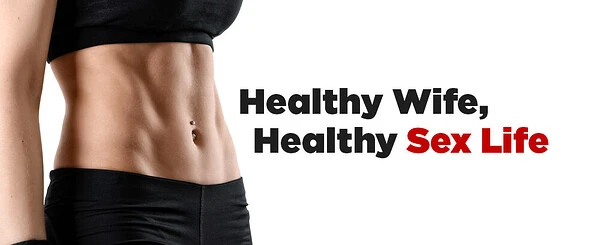Resveratrol: Its Multifaceted Benefits Beyond the Known
I. Introduction
Resveratrol is well - recognized for its ability to mitigate the adverse effects of estrogen and optimize natural testosterone production. However, its benefits extend far beyond these functions.
A. The Familiar Notion of Resveratrol
It is common knowledge that resveratrol is present in red wine and is associated with healthy aging. For those well - versed in the subject, resveratrol (available for purchase on Amazon) exhibits anti - inflammatory, testosterone - elevating, and aromatase - blocking properties, which contribute to estrogen regulation. Additionally, it has neuroprotective effects.
B. A Newly Discovered Function
Recent research has revealed that resveratrol also has the capacity to facilitate capillary growth under certain circumstances.
II. The Significance of Capillaries and Resveratrol's Impact
A. Vasodilation and Blood Flow
Resveratrol possesses vasodilation properties. By "inflating" blood vessels, it not only reduces blood pressure but also enhances blood flow. This is achieved through four primary mechanisms, all of which are related to the activation of the enzyme endothelial nitric oxide synthase (eNOS). The activation of eNOS leads to the production of nitric oxide (NO). NO effectively transforms blood vessels from a congested two - lane tunnel into a four - lane tunnel. This is highly beneficial as wider and more flexible blood vessels result in decreased blood clotting, reduced blood pressure, less plaque formation, and improved erectile function.
B. Angiogenesis and Heart Health
Resveratrol also plays a crucial role in angiogenesis, the process of new capillary growth. It helps construct capillary "bridges" or "ladders" to re - establish and maintain blood flow to the heart when arteries require assistance. A remarkable experiment demonstrated that "pre - conditioning" animals with resveratrol (administering it prior to intervention) led to an increase in the number of capillaries formed around their blocked coronary arteries within just three weeks. This was accomplished by raising the levels of VEGF, a cell - produced substance that promotes angiogenesis, thereby supporting heart function.
III. Resveratrol and Muscle Health
A. Capillary Formation in Muscles
Resveratrol appears to build capillary "ladders" to muscle cells, at least in animal studies. This action makes muscle fibers more fatigue - resistant and generally more "age - resistant." As skeletal muscles age, they may be afflicted by "tubular aggregates" (TA), which are characterized as a "subsarcolemmal accumulation of granular materials." One theory posits that TAs are caused by injuries or the aging process of the sarcoplasmic reticulum, a membrane within muscle tissues, which disrupts the calcium flux - the reaction enabling muscle contraction and relaxation.
B. Impact on Muscle Weakness
Experiments with rats have shown that relatively small amounts of resveratrol (0.04% of the diet) can lead to an enhanced capillary network. This not only reduces the number of TAs but also occurs independently of muscle fiber type. This is significant because normally, type IIB fibers (fast - twitch) have fewer capillaries initially. Since fatigue resistance is positively correlated with capillary density, an increased number of capillaries allows muscle fibers to function for longer periods.
IV. The Selectivity of Resveratrol's Capillary - Nurturing Effect
A. Inconsistent Capillary Growth
Resveratrol seems to be rather selective in promoting capillary growth. For example, it appears to inhibit capillary growth in animal tumors while increasing capillarization around the heart and, in at least one experiment, in animal muscle fibers. The reason for this selectivity remains unclear. It is possible that resveratrol - induced angiogenesis is more prominent in older individuals.
B. Mitochondrial Enhancement
On the other hand, other experiments have indicated that resveratrol enhances the energy - producing capacity of mitochondria (the cell's energy - generating organelles) in both young and old athletes. This, in turn, increases exercise endurance.
V. Obtaining the Right Dose of Resveratrol
A. Dietary Sources
When considering resveratrol, most people think of wine. However, to obtain an effective dose, one would need to consume approximately 140 bottles, which is clearly not advisable. While it may be possible to ingest sufficient resveratrol from a combination of whole foods or drinks, such as blueberries, bilberries, cranberries, peanuts, and cocoa, this would require consistent and substantial consumption.
B. Supplements as the Optimal Choice
Supplementation is a more logical option, especially when dealing with polyphenols and carotenoids. This is why Rez - V (available for purchase on Amazon) was developed. Two Rez - V softgels contain 600 mg of active pure trans - resveratrol, the exact type and amount needed for an effective dose.
VI. References
Fukuda S et al. "Resveratrol ameliorates myocardial damage by inducing vascular endothelial growth factor - angiogenesis and tyrosine kinase receptor Flk - 1." Cell Biochem Biophys. 2006;44(1):43 - 9. PubMed 16456233.
Kaga S et al. "Resveratrol enhances neovascularization in the infarcted rat myocardium through the induction of thioredoxin - 1, heme oxygenase - 1 and vascular endothelial growth factor." J Mol Cell Cardiol. 2005 Nov;39(5):813 - 22. PubMed 16198371.
Toniolo L et al. "Long - term resveratrol treatment improves the capillarization in the skeletal muscles of ageing C57BL/6J mice." Int J Food Sci Nutr. 2021 Feb;72(1):37 - 44. PubMed 32449407.





